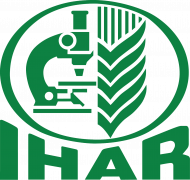Abstract
The quality of a seed potato lot is determined by the number of blackleg-affected potato plants. To enhance the quality, affected plants are both detected and removed manually which is laborious and time-consuming. This paper investigates the potential of using a state-of-the-art machine method for automating the blackleg detection task, a problem overlooked in the literature. In particular, we assess for the first time the use of an efficient convolution neural network (EfficientnetV2) for this problem and elaborate on the explainability of obtained results based on activation maps computed using Grad-CAM. Conducted experiments considering a dataset comprising 4000 images depicting potato plants of six different varieties and affected by three different kinds of Pectobacteriaceae. The EfficientnetV2’s use led to effective detection results (0.81 recall and 0.91 precision). The qualitative analysis of results using gradient activation maps (Grad-CAM) suggests that the trained model learned to classify blackleg on the characteristic symptoms of blackleg. Our results suggest the feasibility of the practical automation of potato blackleg detection. The investigated detection model can be embedded in a robot platform or mounted on a vehicle to assist farmers in scouting blackleg.
Graphical abstract
Full publication URL















